Me in a box – Bulgarian contributions
by the Fridrich-Schiller-School in Ruse
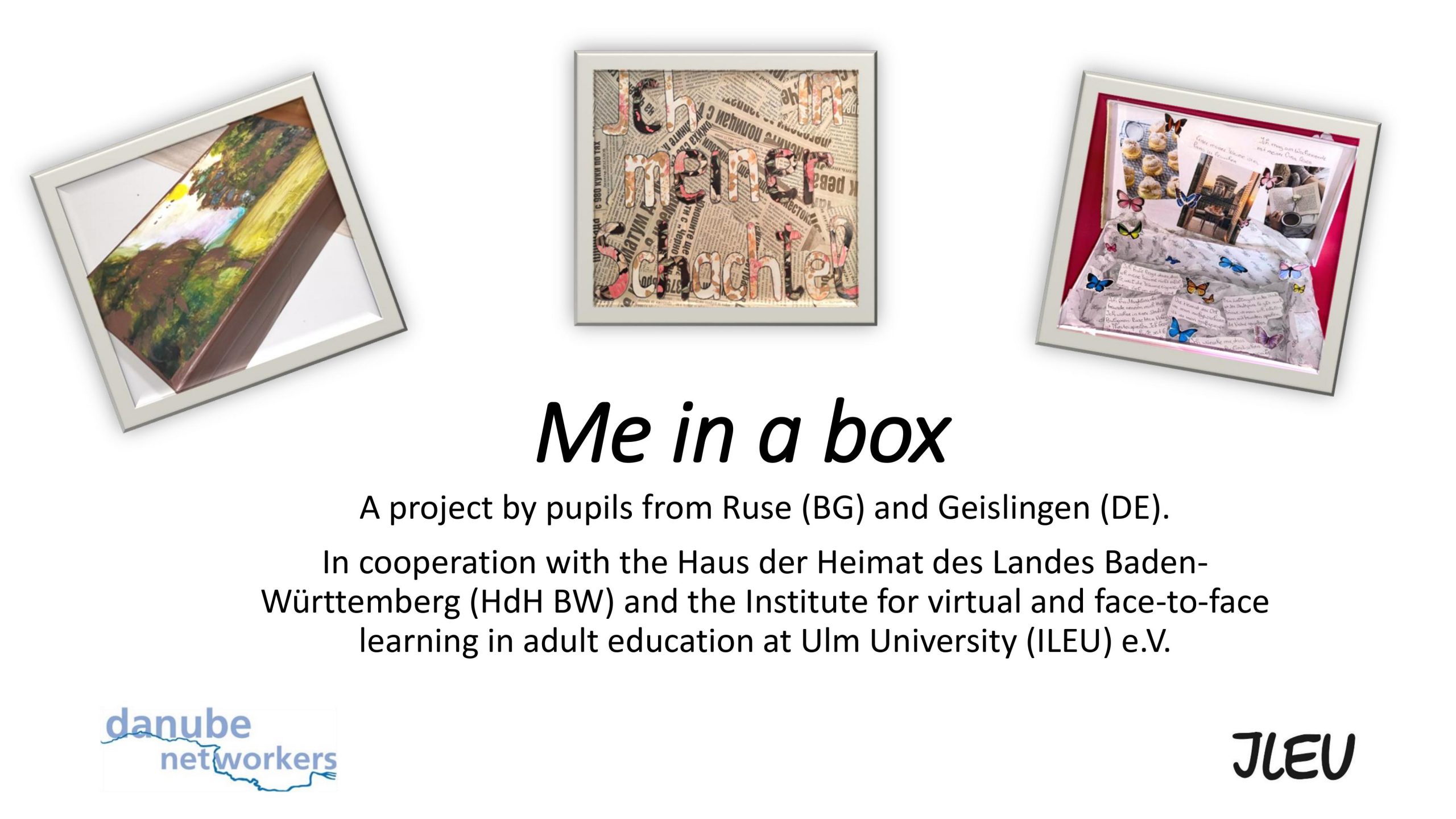
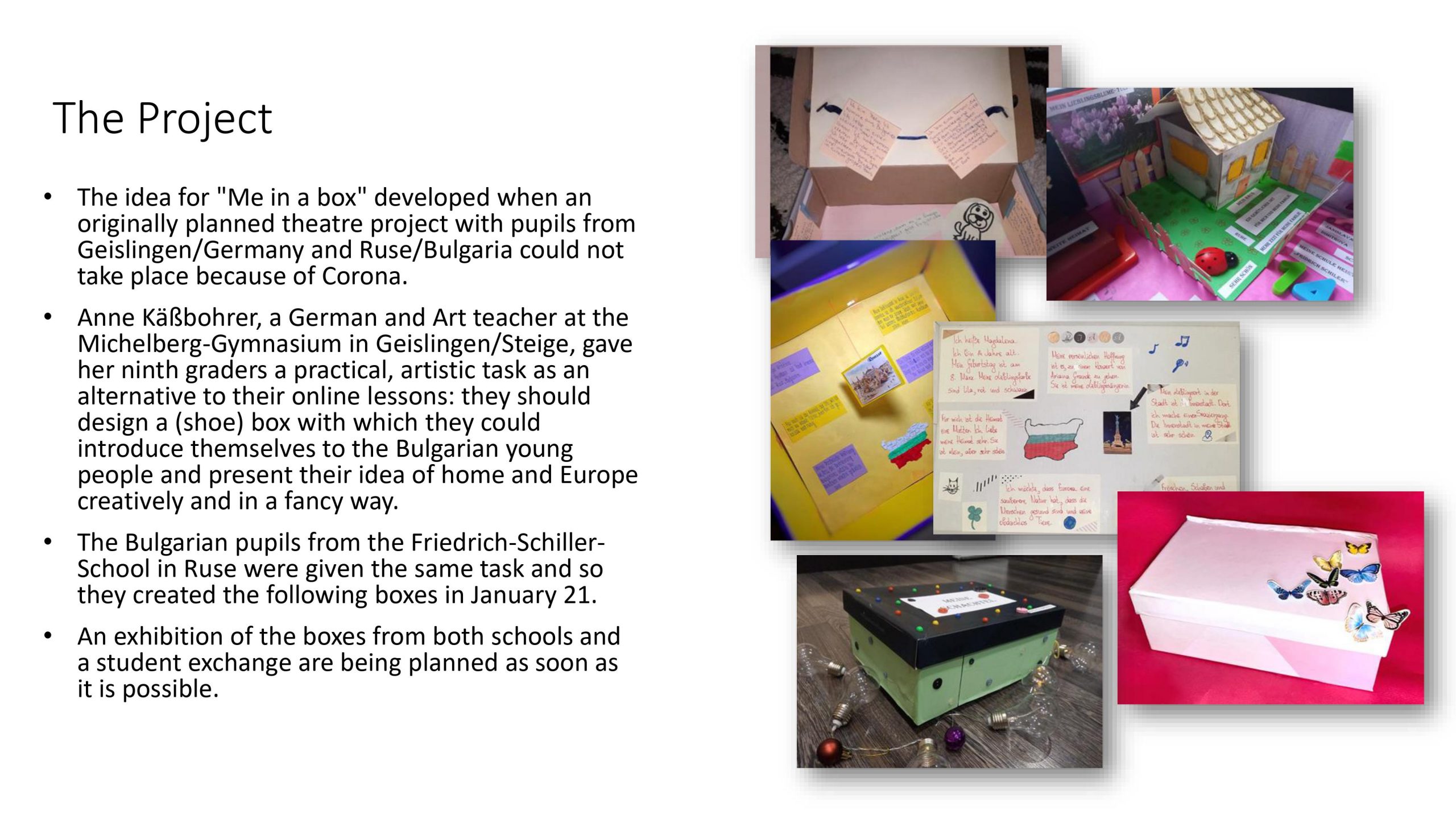

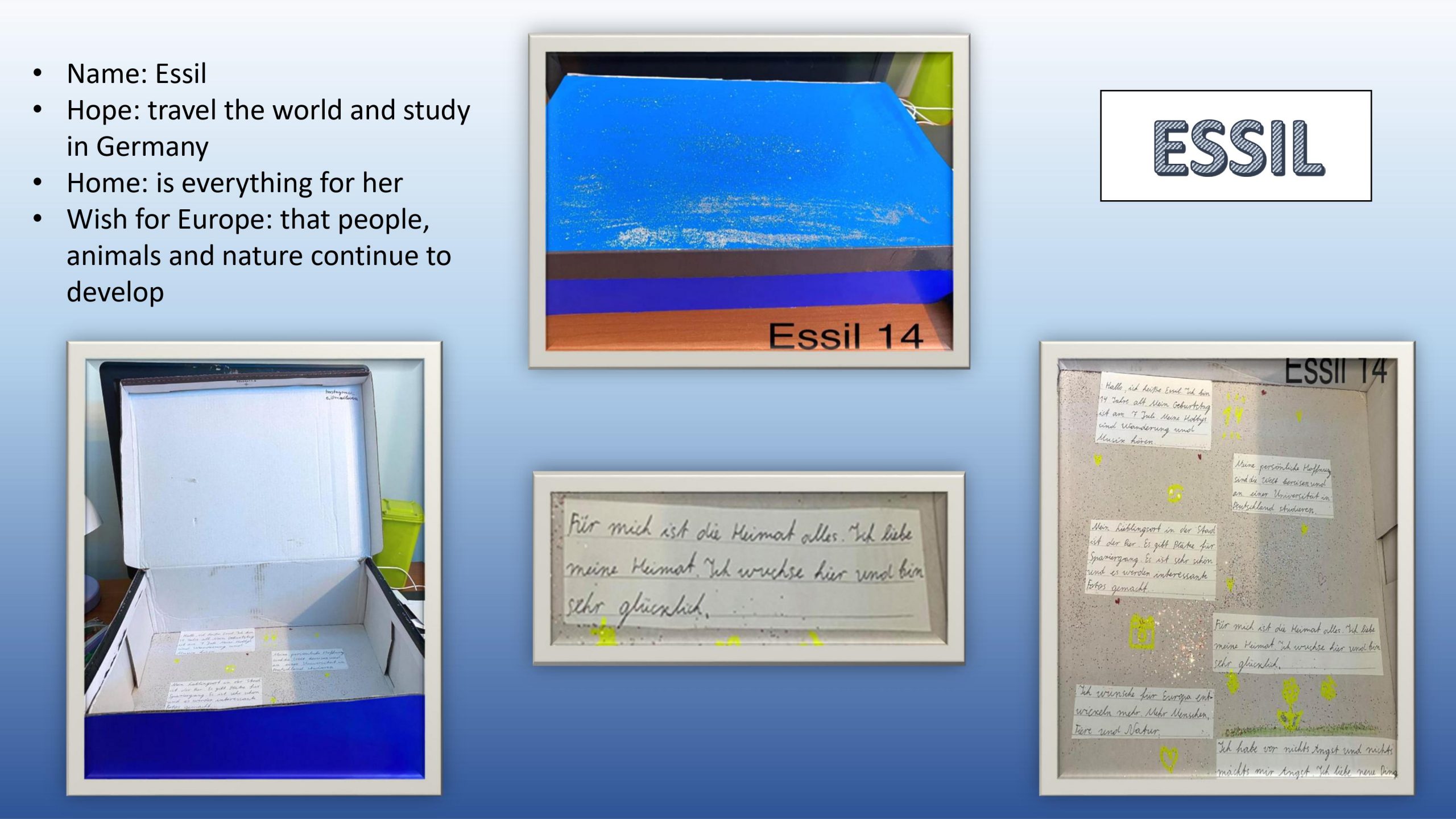
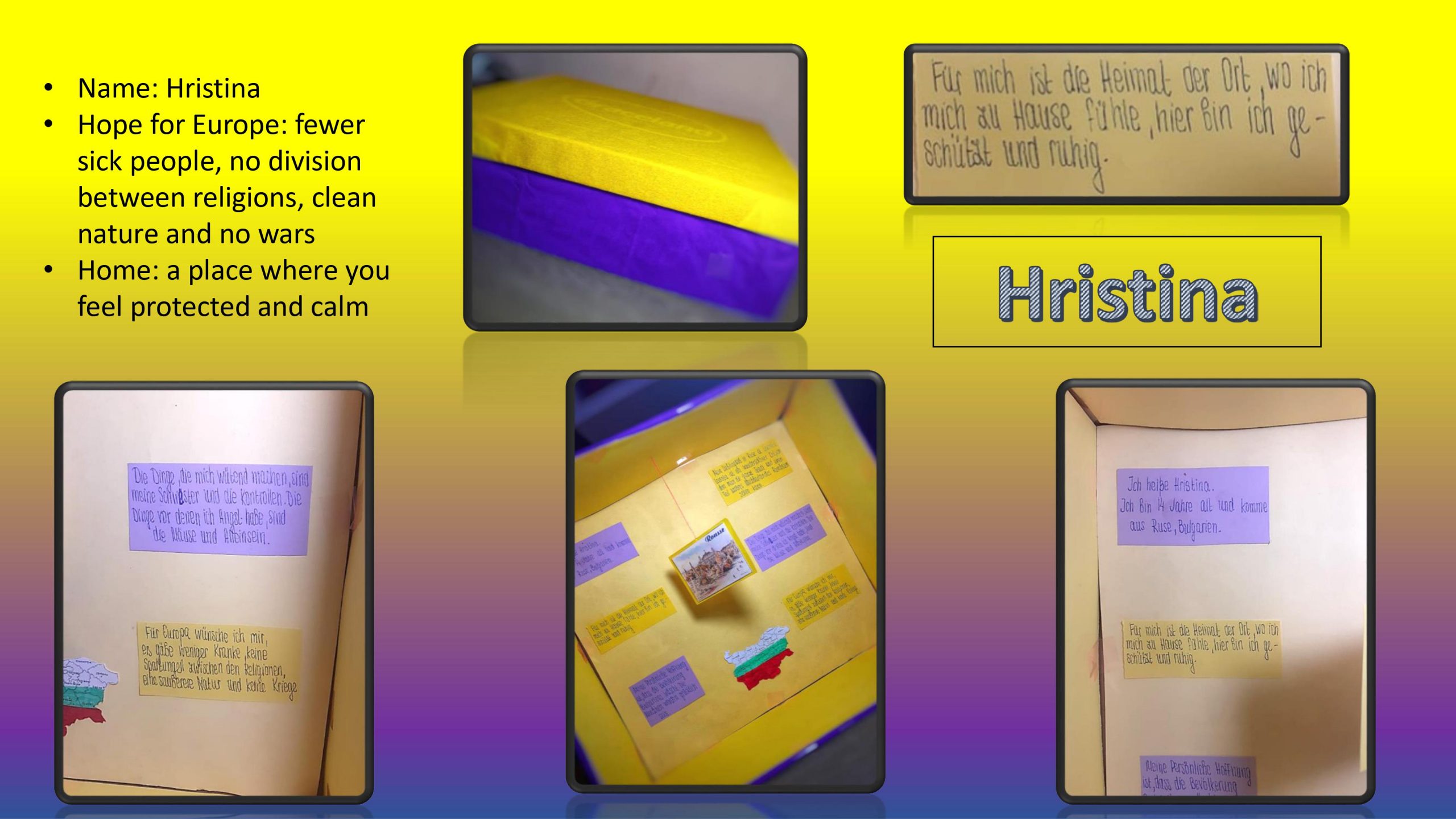
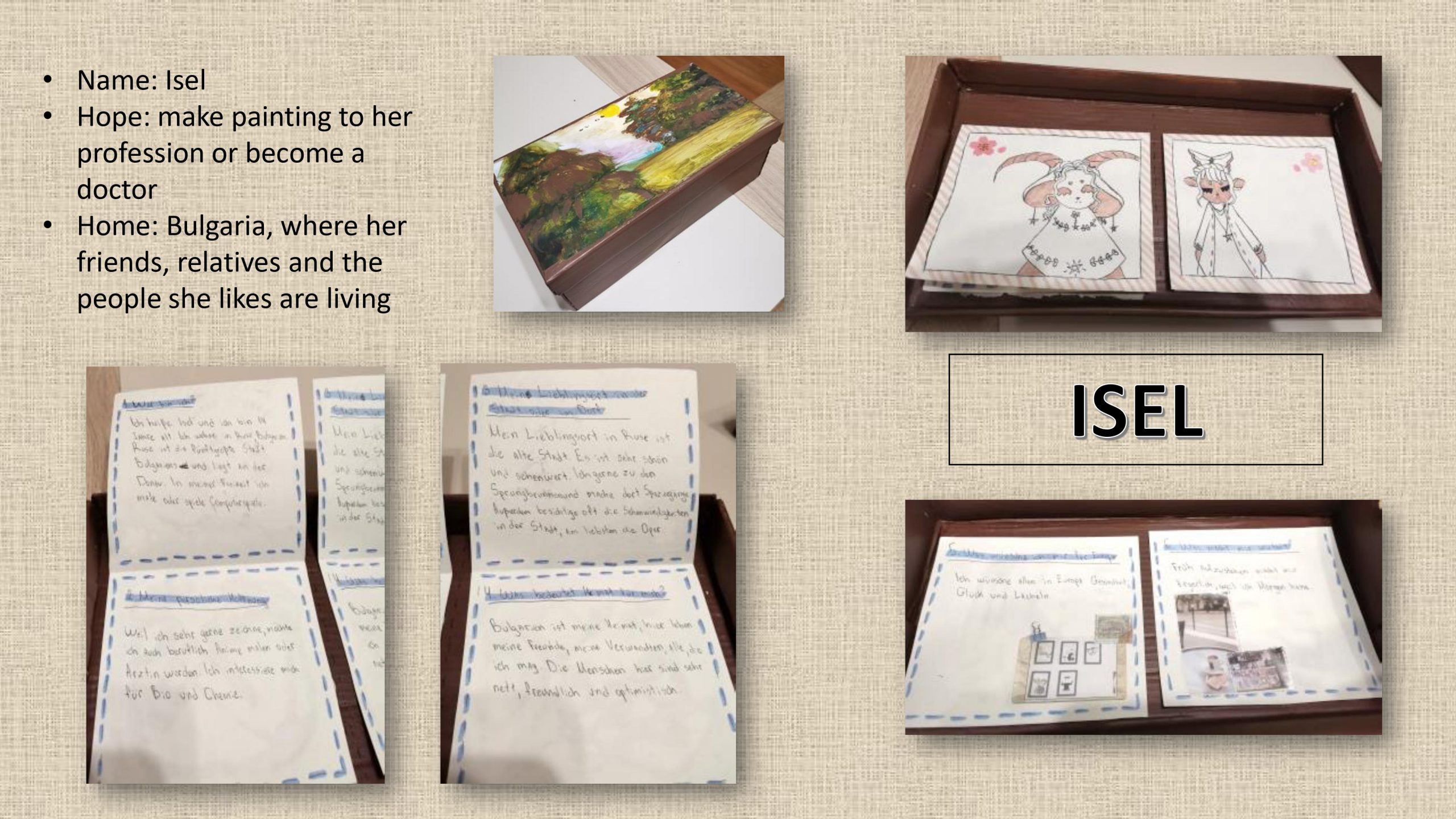
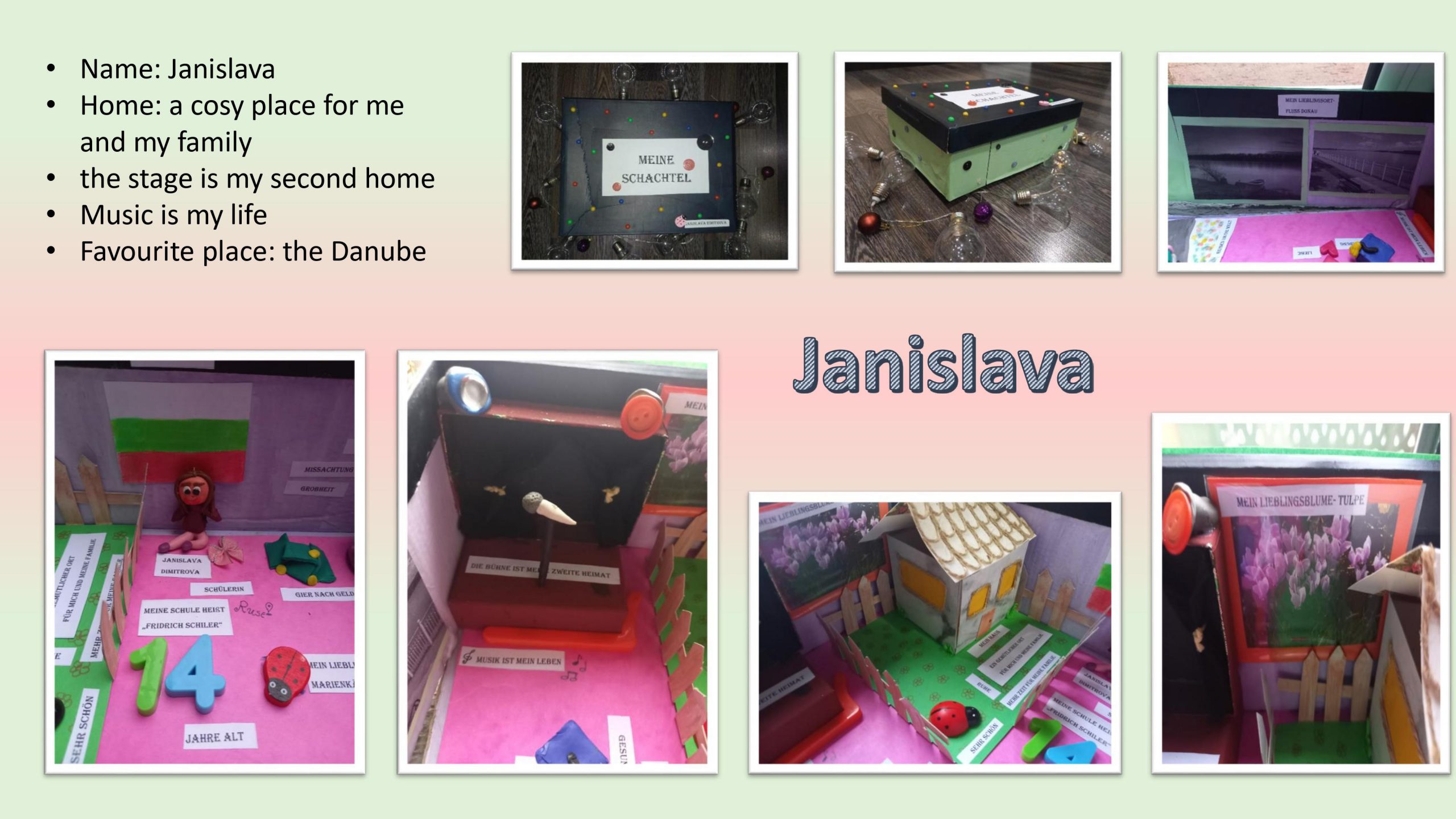
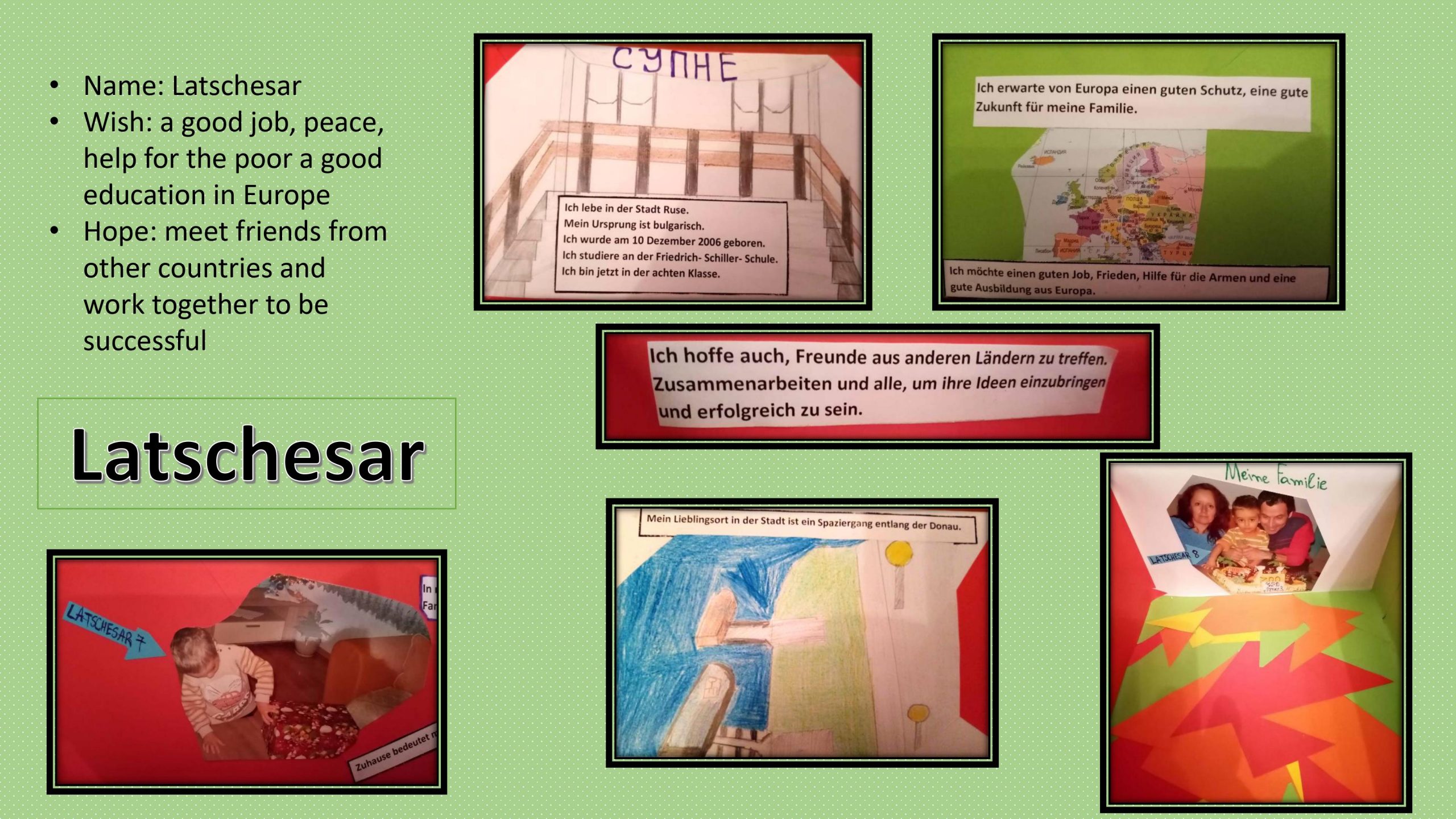
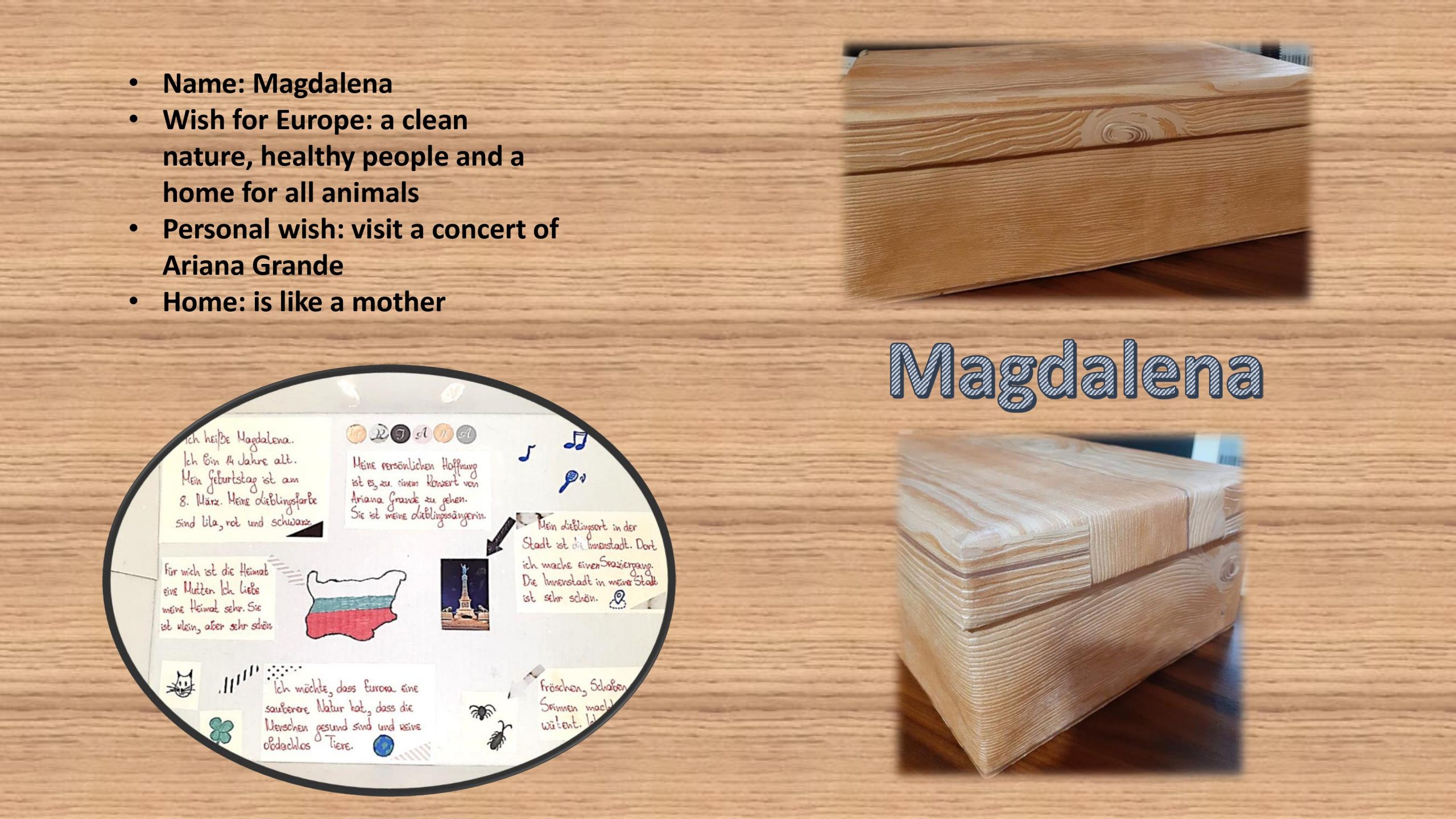

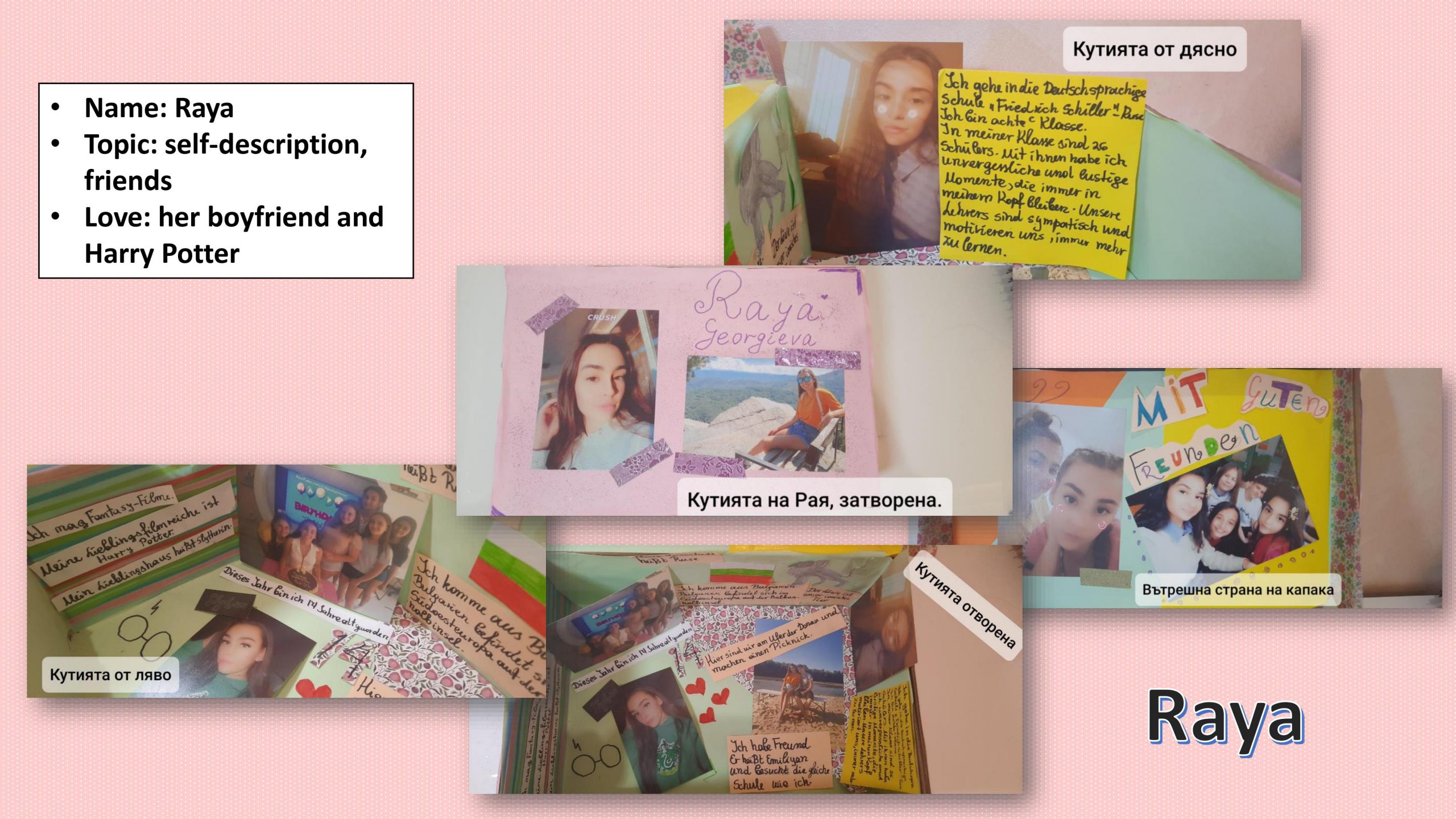

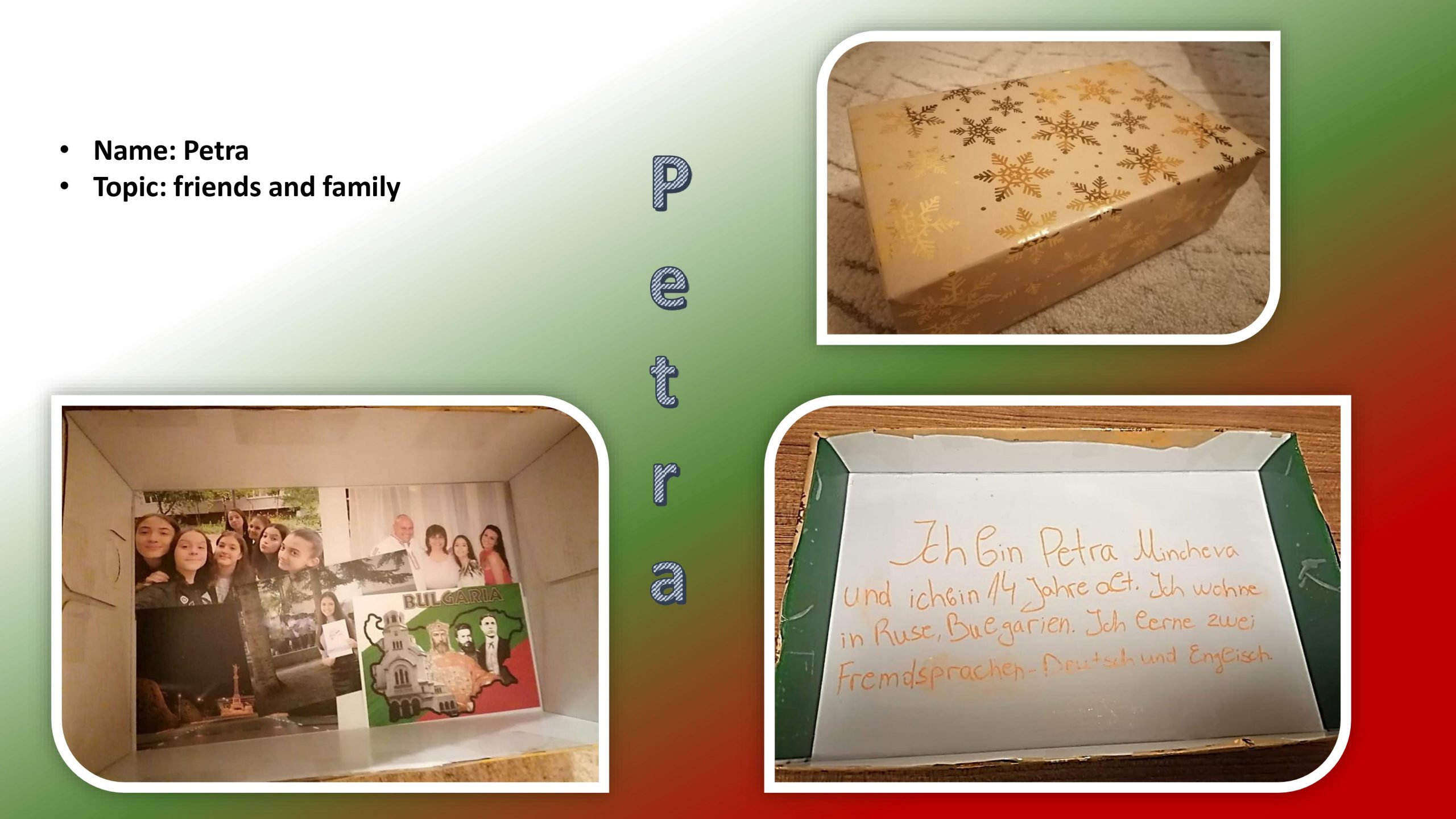
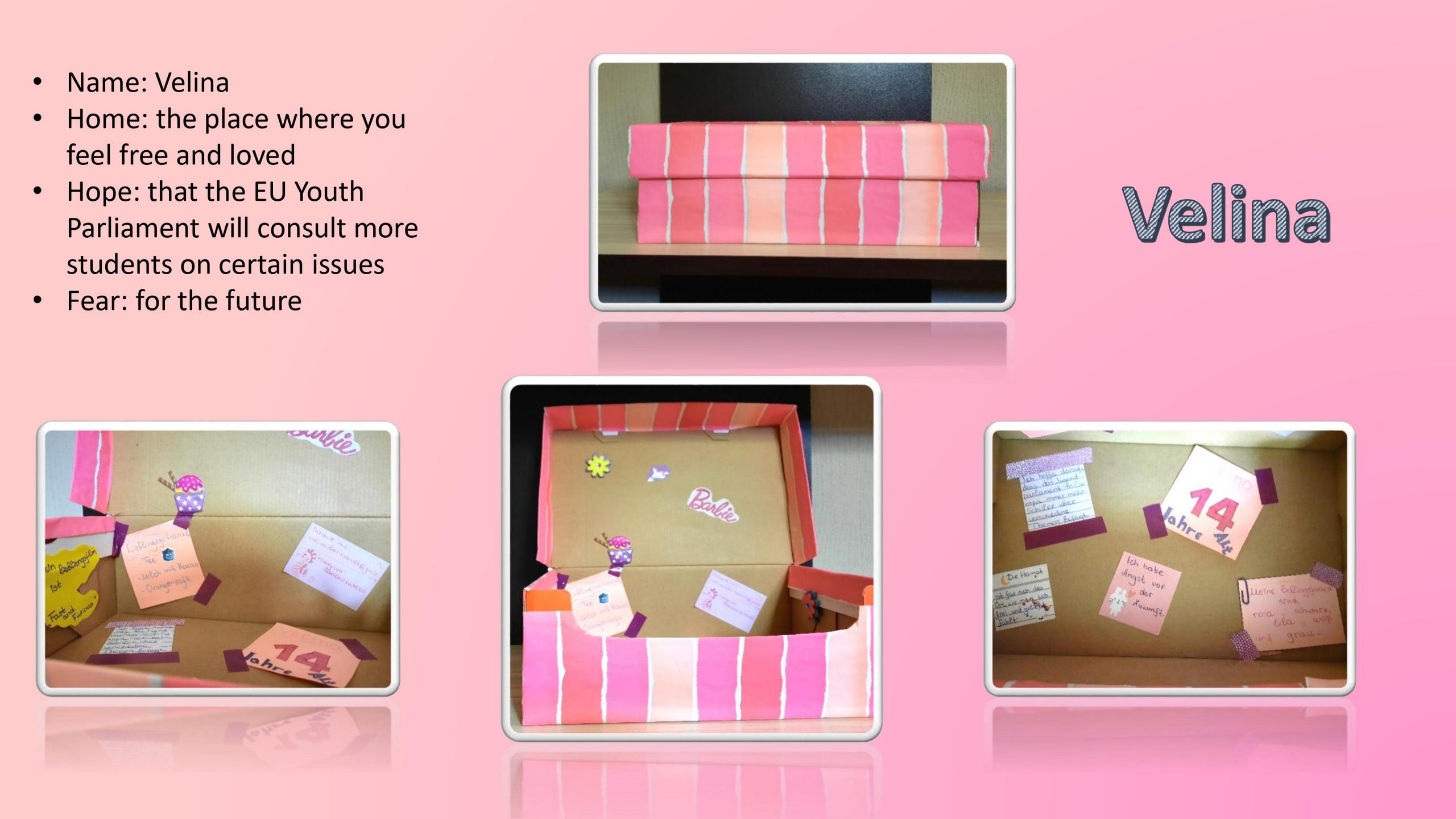















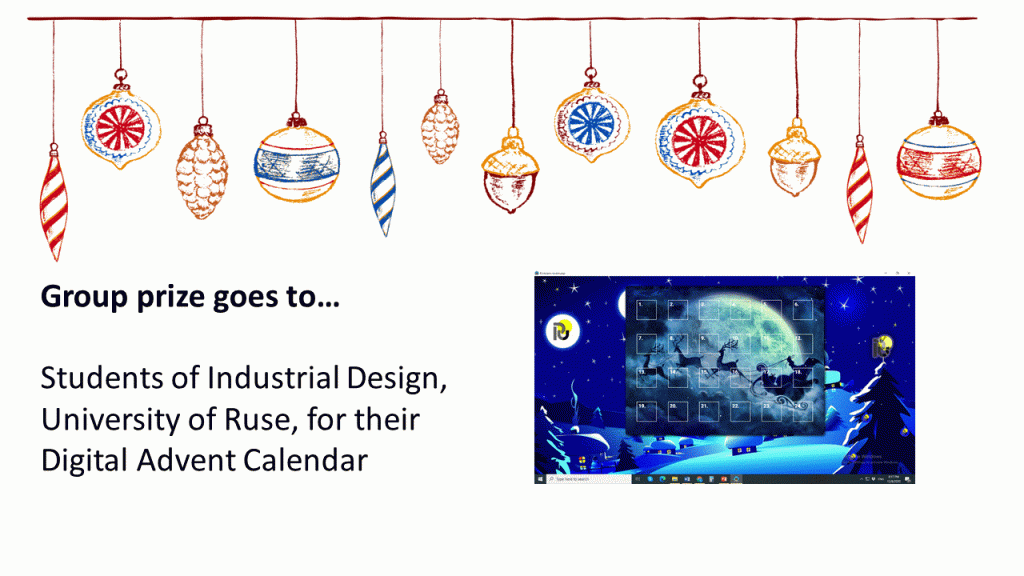
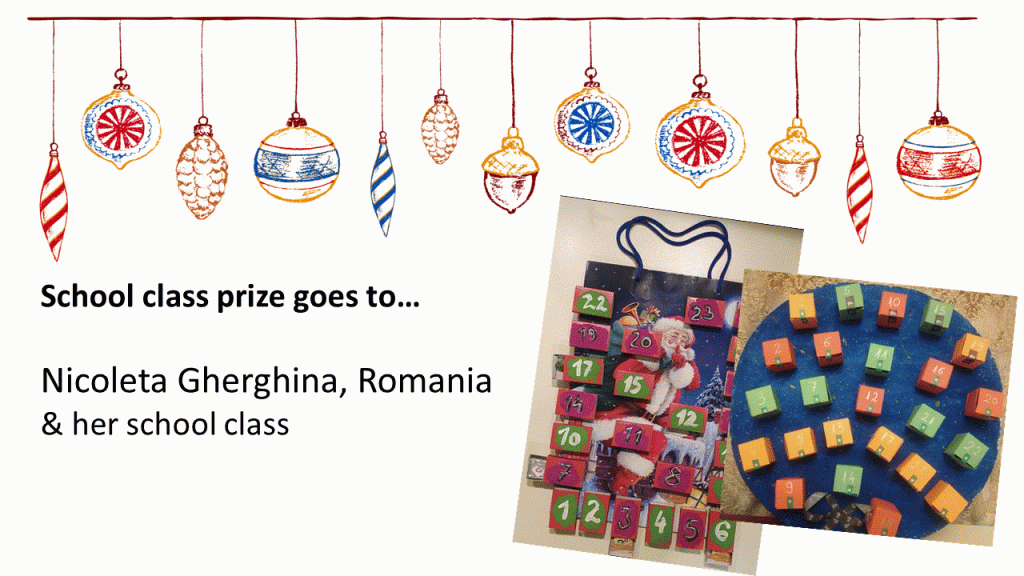
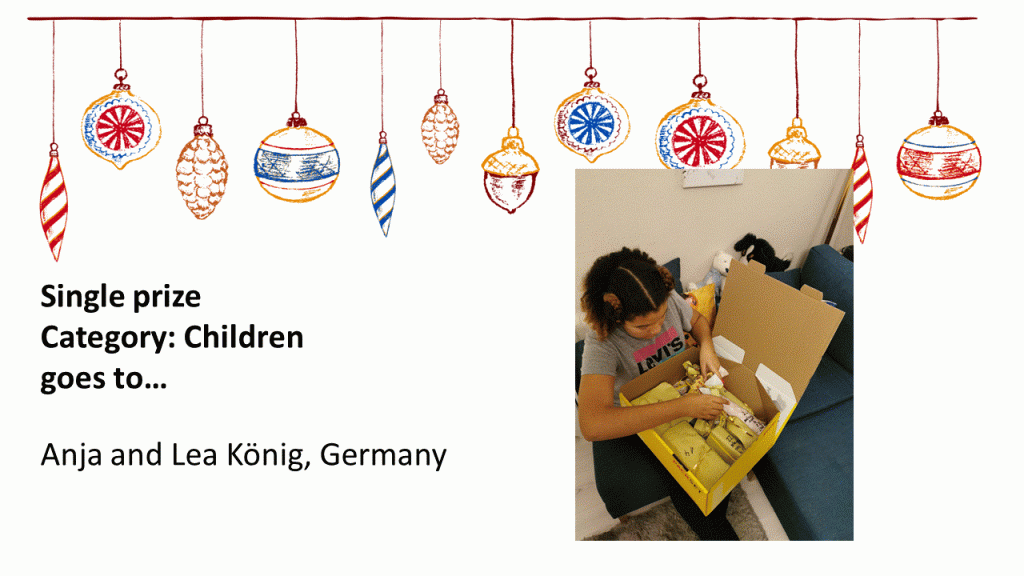
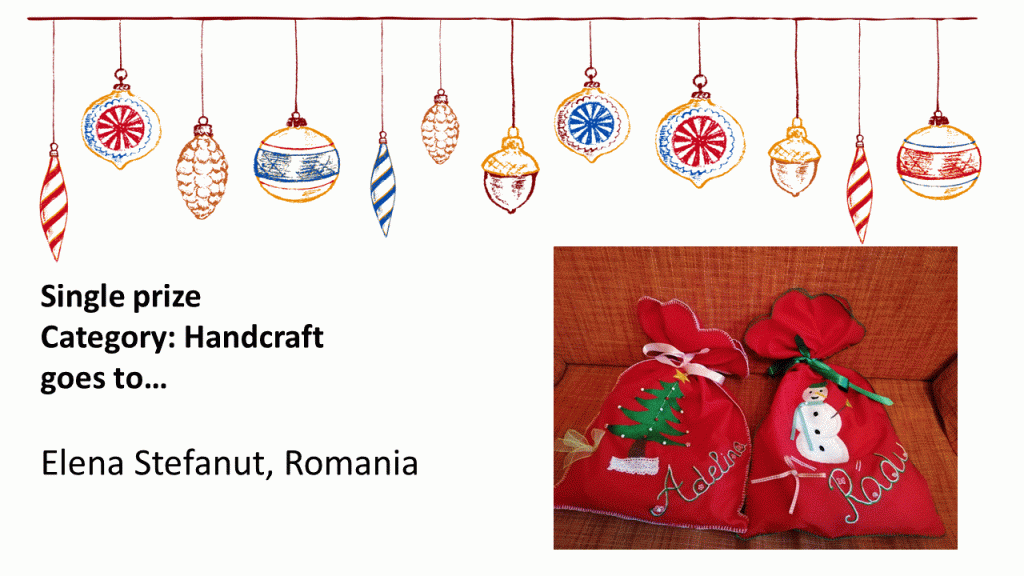
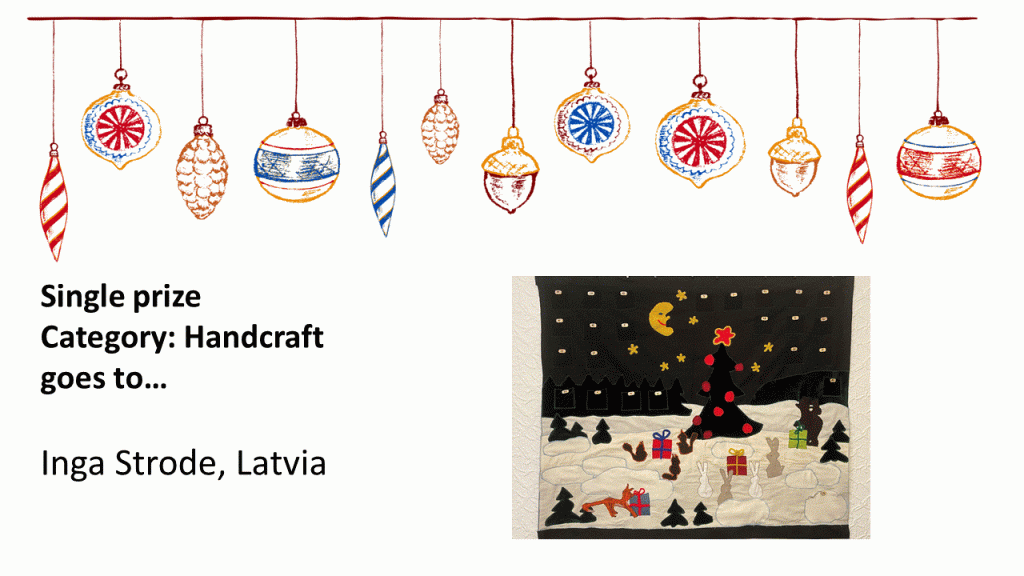
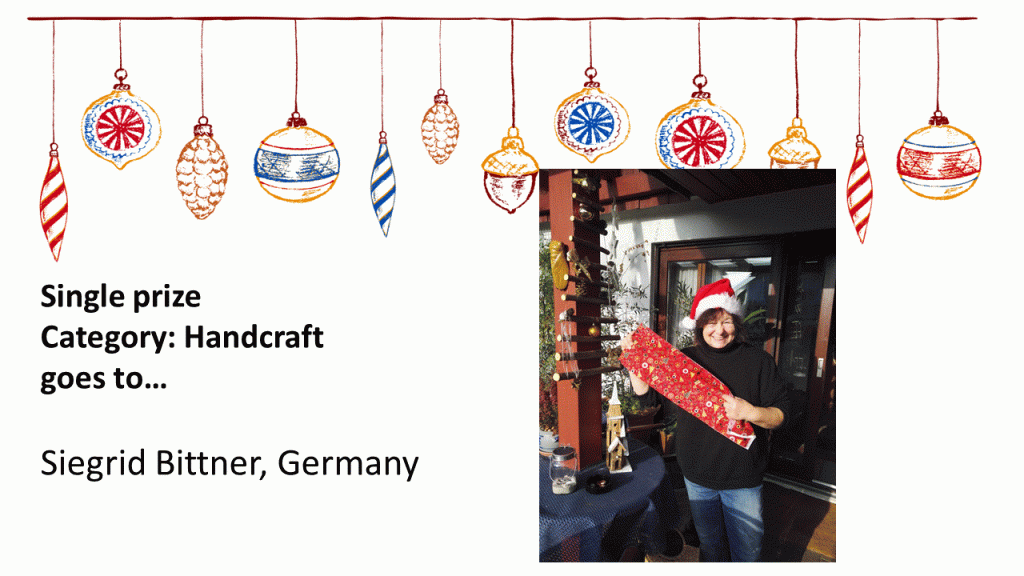
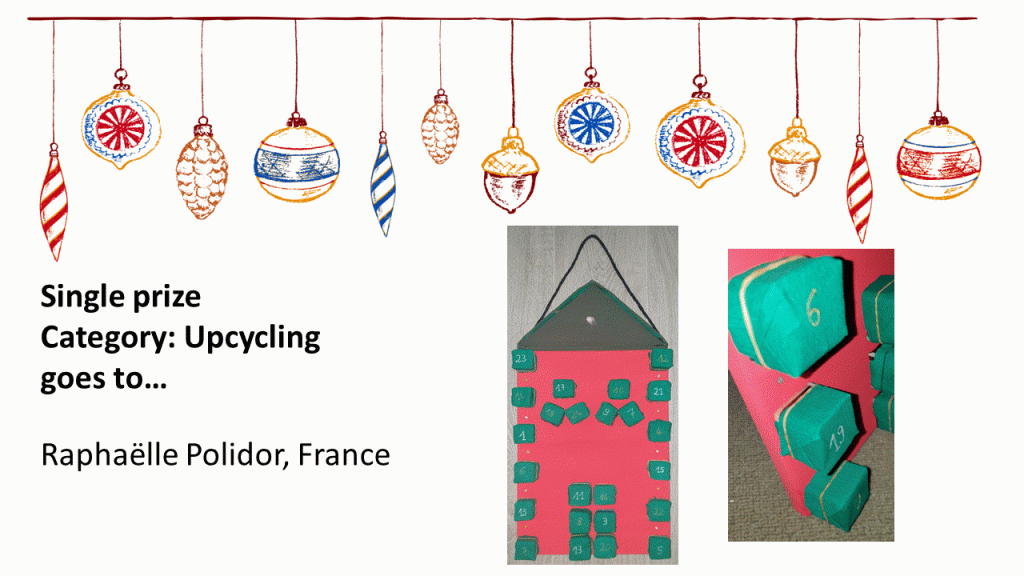
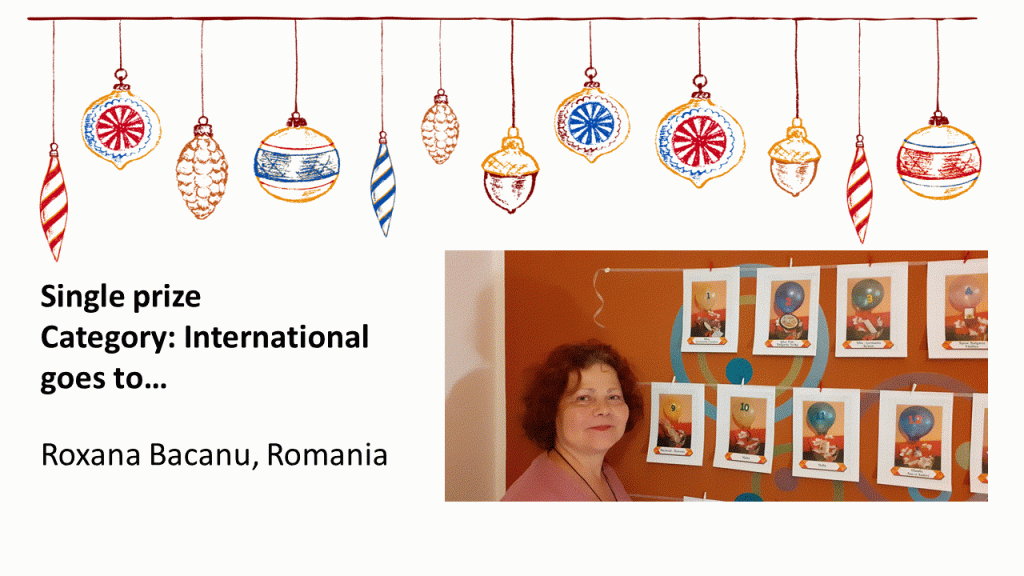

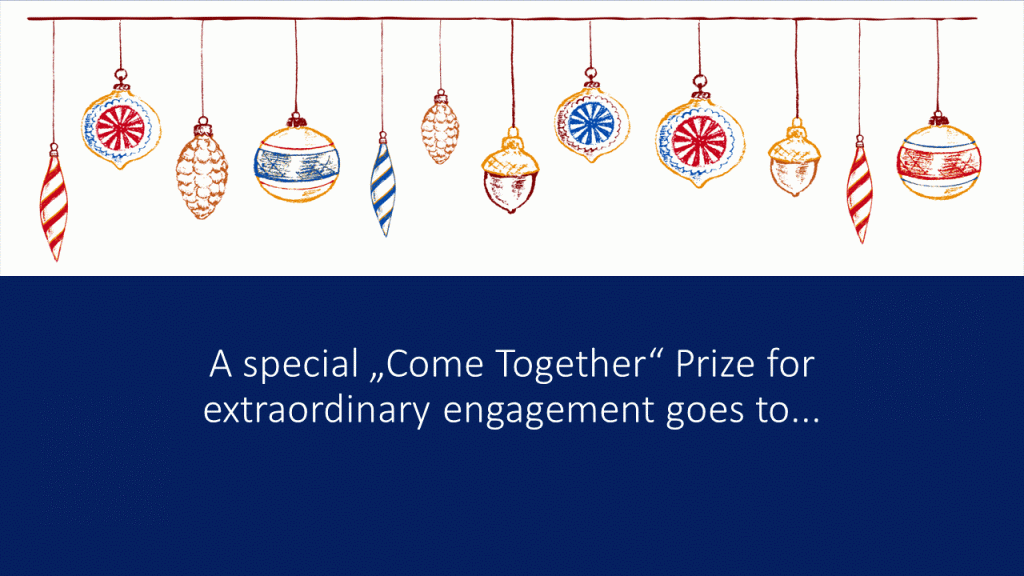

Text by Mihaela Marcovici
The folk costume from the Bistriţa-Năsăud area shows a certain optimism expressed by the contrast between the white fabric of the shirt and the strong red in the embroidery. The leather processed by the village furrier is transformed into “chest” (vests) and “coats”. Depending on the cut, the vests are closed or open.
The coats worn on weekdays were less adorned or not at all.
On Sundays and on holidays, men wear beautifully adorned vests adorned with ornamental tassels of different colours, made of wool or silk.
The colour of the ornamental tassels is expressed in shades of red, orange and blue, specific to young people. For the elderly, black tassels are added. This colour highlights the vitality, openness and generosity of young people, as well as the seriousness and warmth of the elderly.
The variety of colours of the tassels wants to imitate the colour of the peacocks. When the male peacock wants to “conquer” a female peacock, he folds his feathers to look as attractive as possible. Therefore, when dancing with these vests, the movement of the tassels mimics the folded feathers of the peacocks.
The number of tassels on the vest represents the well-being of the family. The richer the family from which the young man comes, the richer the tassels and they are made of silk. This element of the folk costume worn by men from the Năsăud area is completed by the peacock feather hats, which complete the image of the folk costume. There are very few craftsmen who know how to make these hats today. The hat with peacock feathers is worn by the boys, and the number of rows of feathers represents their wealth.
The Romanian people are very proud of their popular costumes. Almost everybody has at least the blouse called “ie” at home. Because such a costume is not cheap or easy to sew the seniors at the Centre decided to do it by themselves within the frame of a creative workshop.
By doing this together, we created the joy of knowing that we have preserved the legacy of popular traditions that we want to offer to future generations and share it with our neighbours.
At the same time, we want to share the way women in the past used to sew these folk costumes. They organised themselves in the so called “sittings” where they sewed, weaved or spun the wool for the fabrics. During these “sittings” they used to sing, tell stories and play certain social games. Unfortunately, the art of making handmade clothes is barely present nowadays. Though the revival of the “sittings” at our centre we want to offer an example for good practice for the elderly and beyond.
Read more about this cultural treasure …
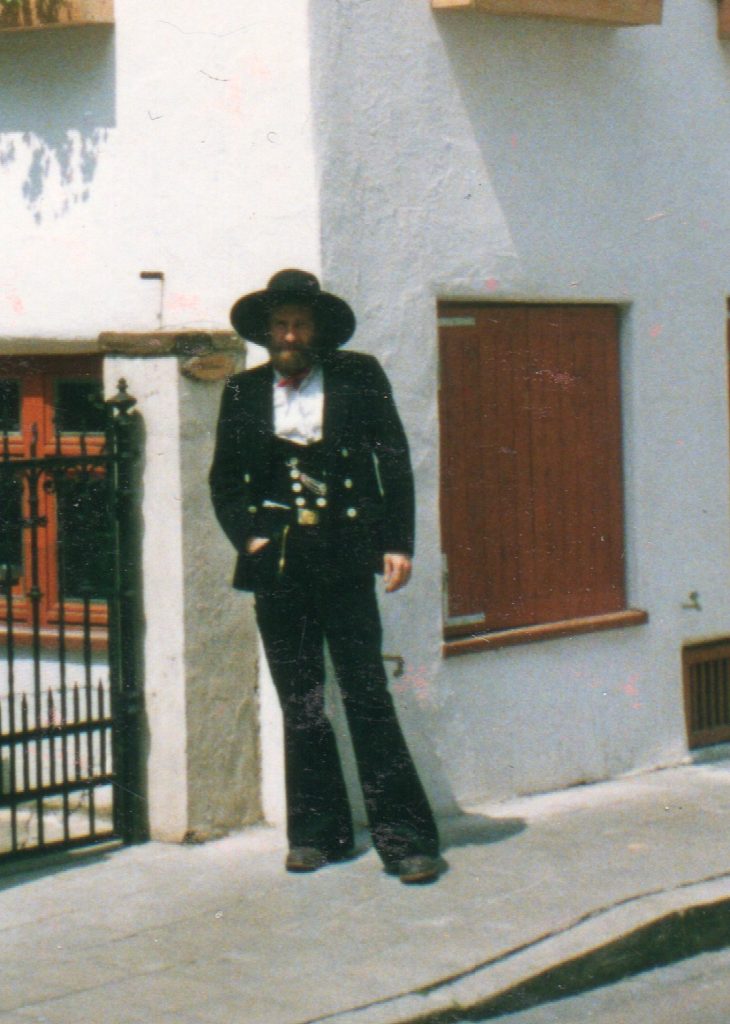
Name: Bertram Wegemer
Place: Ulm
Country: Germany
Category: craftsmanship, handicraft
Description
Master craftsman training and status in the craft using the example of carpentry:
My reference: In January 1994 I passed the examination for the master craftsman’s diploma in carpentry at the Ulm Chamber of Trade. Since then I have been running a master carpentry business. Like hardly any other craft, carpentry combines traditional and modern skills and knowledge. The building craftsmen, to which also the carpenters belong, preserve like hardly anybody else craftsmanship but also social traditions, which go back to the early gothic period. Outwardly well to see at the still worn dress as work clothes.
Intention
The firm anchoring not only guarantees a high level of craftsmanship, but also ensures that all knowledge is passed on. Not only craftsmanship skills are passed on, but also social and ethical standards and values. Vocational training and then execution remain at a high level.
Read more about this cultural treasure
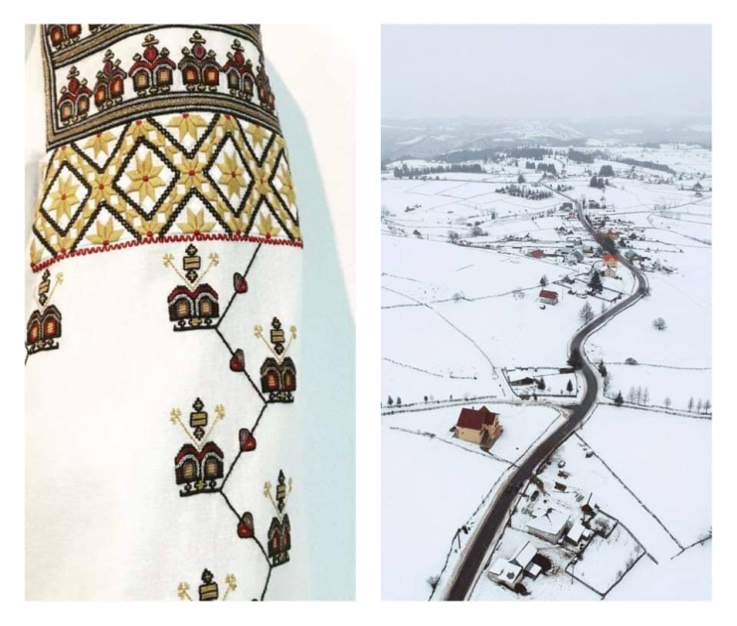
Name: Anca Azoitei
Place: Suceava
Region: Bucovina
Origin: Romania
Category: handicraft
Description
The richly colored and varied shapes of the traditional shirt, IA, had more than an aesthetic significance. The shirt was full of magical symbols meant to ward off the wearer from evil spirits or old women’s charms.
Whether it was made of linen or hemp, borangic or silk, the central sign of the shirt was always the cross. The shirts worn by married women differed from those worn by unmarried girls. Married and old women wore shirts with stitches in darker colors, while for the young girls the colors were lighter and brighter.
Intention
“IA reflects the identity of Romanian people. The traditional IA has a significance and value for the Romanian folklore similar to the meaning of the pyramids to Egyptians, cathedrals to French and the dams to the Dutch. IA is one visible and tangible testimony of the village tradition on our land. The Romanian costume takes us out of the field of art and leads us into that of history “, is the description made by the Romanian people in the volume” Romania – From the traditional folk harbor treasure”.
Read more about this cultural treasure

Name: Carmen Stadelhofer
City: Ulm
Country: Germany
Category: Tradition
Description
The Advent calendar is initially a Christian custom and has in German speaking countries a long tradition. It is intended to increase the anticipation and the tension of the children before Christmas celebration. From the 1st of December to the 24th of December every child who has an Advent Calendar is allowed to open one small door every day, namely the door corresponding to the relevant day of the month. Behind them are small pictures or more recently sweets. In our family we give today self-made Advent Calendars with 24 small numbered parcels. Seeing them and unpacking one every day makes me also as adult looking forward to Chistmas with fun and reminds me of beautiful childhood days.
Intention
This old custom belongs to me like the advent wreath and the Christmas bakery to get in a good mood for Christmas as a festival of peace. Unfortunately this custom has been very commercialized by the chocolate and other industry in the recent years. For this reason I like the self made calendars with twinny gifts. I like also very much the floating calendar existing in some localities today. For this 24 houses or windows are needed. There is a plan who decorate a window for one number of the calendar. Very often this event is joint by a meeting of people, staying for a while together in front of the window, singing Advent songs and taking a hot wine and Christmas cookies together.
Read more about this cultural treasure

Name: Carmen Rouhiainen
Region: Schwabian Alb
Country: Germany
Category: bread and baking culture
Description:
I come from a village on the Swabian Alb, where baking in the wood stoves of the village baking house is regularly practiced. I grew up with this living tradition. For me it was only natural to learn the techniques from firing and controlling the oven, to rolling out “Blatz”, our Swabian pizza, and charging the oven with bread. The baking house is a place where the people of the village come together to get in touch with each other and bake together. Often one is lucky and is invited to a piece of Blatz. Once a year, on the 1st weekend of July, we celebrate our village festival around the baking house.
Intention:
I would like to show and teach this tradition of baking in the baking house to others, just as it was shown and taught to me by my mother, in order to preserve the traditional craft of baking bread in stone ovens with wood. It is an important part of our actively lived village community. Everybody who is interested can learn these techniques and participate. It is a connecting and elementary work, in which a lot of work is done with the hands, which can be physically strenuous, but also just as much fun and pleasure to experience. Especially when you bite into freshly baked and still steaming “Blatz” or bread and think that there is actually nothing that could be tastier at this moment.
Our new website for the CODANEC project is now online.
Here you will find all news, information and materials concerning the project. We are also setting up a forum and an internal area for members, we have an event calrender and will post regualry about our activities.
Check regularly our website and keep up to date!
We are looking forward to a successful project, great events and many contributions from people all over the Danube region and beyond that. Read more about the CODANEC project.




This project has received funding from the Staatsministerium Baden-Württemberg and the City of Ulm. This website was funded by BMFSJ.
Design and implementation by Arivum. All rights reserved